THE SANGUINE ROOT ENJOYS THE GARDEN THIS PAST WEEKEND AND TAKES A WALK IN MORRIS PARK AND IN THE WISSAHICKON VALLEY PARK. MANY BEAUTIFUL NATIVE SPRING EPHEMERAL FLOWERS ARE FOUND DESPITE THE THREATENING INVASIVES THAT CROWD AROUND THEM
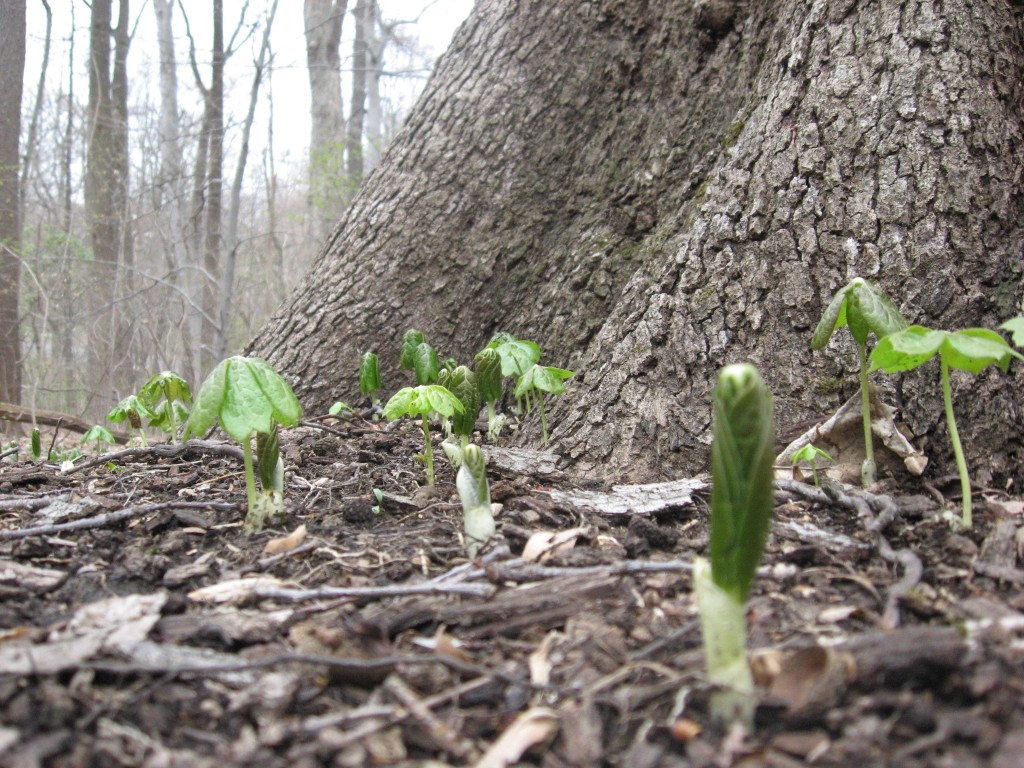
The  Mayapples are finally starting to emerge and express themselves in Morris Park. A neighbor asked the classic question: What are those little umbrella plants? we were so happy to answer that they were Mayapples.  He then asked, what about the blue flowers? Yeah, that would be the invasive Vinca vine (Vinca minor).  Then he asked, what about the yellow flowers? Yeah, that one is also a highly problematic invasive, Lesser celandine (Ranunculus ficaria) . Then he asked, What about the white Flowers?  Ah, Yes, that is a native wildflower, Bloodroot (Sanguinaria canadensis).  We like that one.
So two natives and two invasives. Â We Love to answer questions about the native and invasive plants growing in Morris Park, especially the ones next to the path at Morris Park Road.
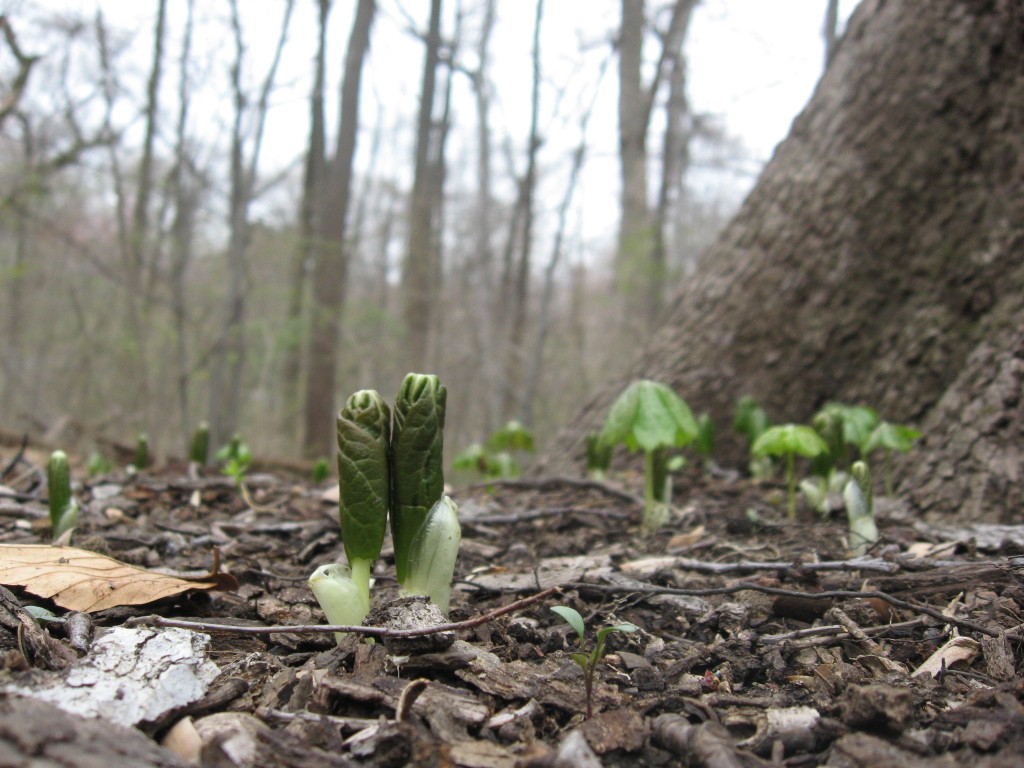
Mayapples making their way into the world in Morris Park, next to the most grand oak tree in the whole park.
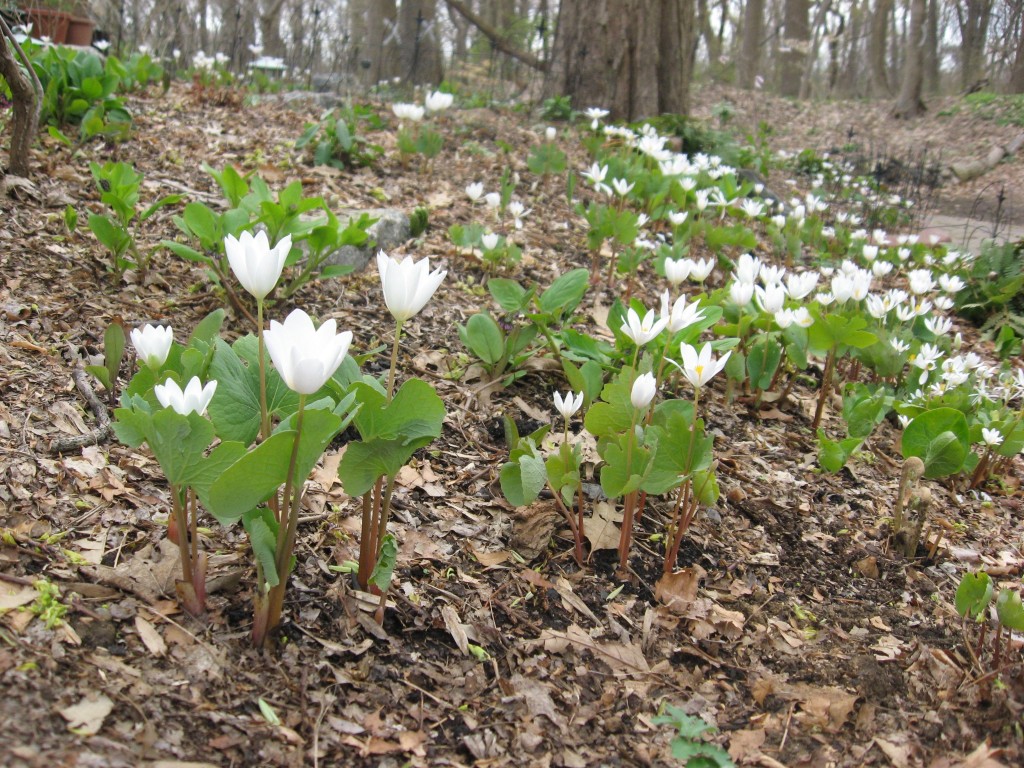
Our front yard. ( Sanguinaria canadensis) The Bloodroot continuously blooms for 3 weeks so far in our yard as the bluebells ready themselves for their blooming season.
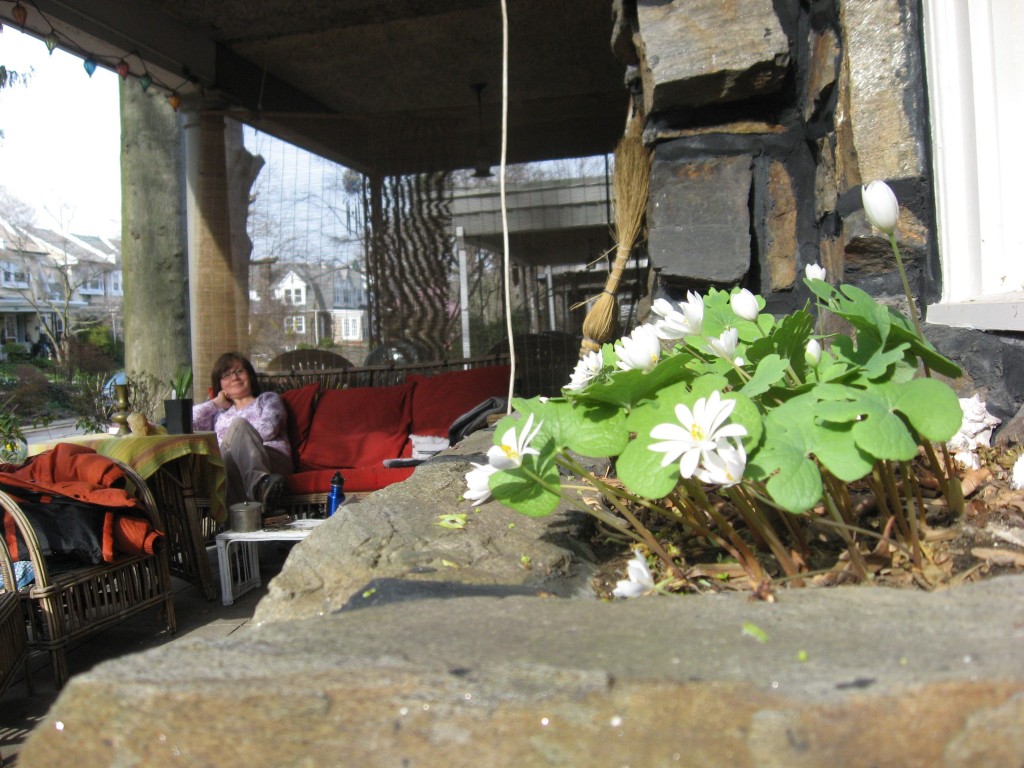
The Arts and Crafts facades of the 1920s rowhomes in this section of Overbrook, boast built in stone planters raised up against the front windows of the homes. The Sanguine Root Staff was able to re-build this planter during a thorough restoration of the stonework on the facade of the building. Now the House of the Sanguine Root has been able to plant our namesake species, Sanguinaria canadensis, Bloodroot, in the special planter. The planting was done last fall,which is the best time to plant perennials, as a bare-root. Â The amount of flowers that came up is astounding. However, the robust flowering is testament to the previous location of the plant, not its present one. In this, we mean that the previous location received ever so much sunlight and moisture and this fed the roots that are now sending up flowers this Spring. Â Once the flowers finish blooming and produce seed, the plant will then set about the business of doing photyosynthesis which will give the roots the necessary energy to flower and produce seed the following year.
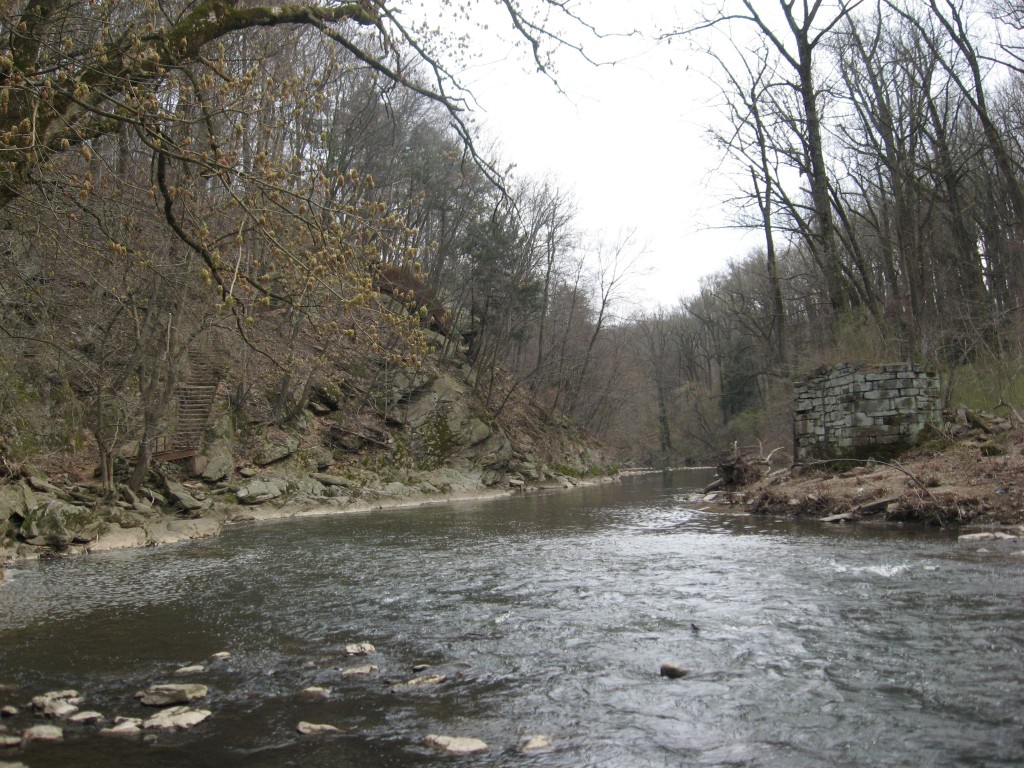
The Sanguine Root loves to explore. Â The Wissahickon Valley Park is a gorge just 15 minutes away in another section of Philadelphia. This most amazing and fantastic part of the Fairmount Park system is not only part of our drinking water source, it is also our neighboring watershed.
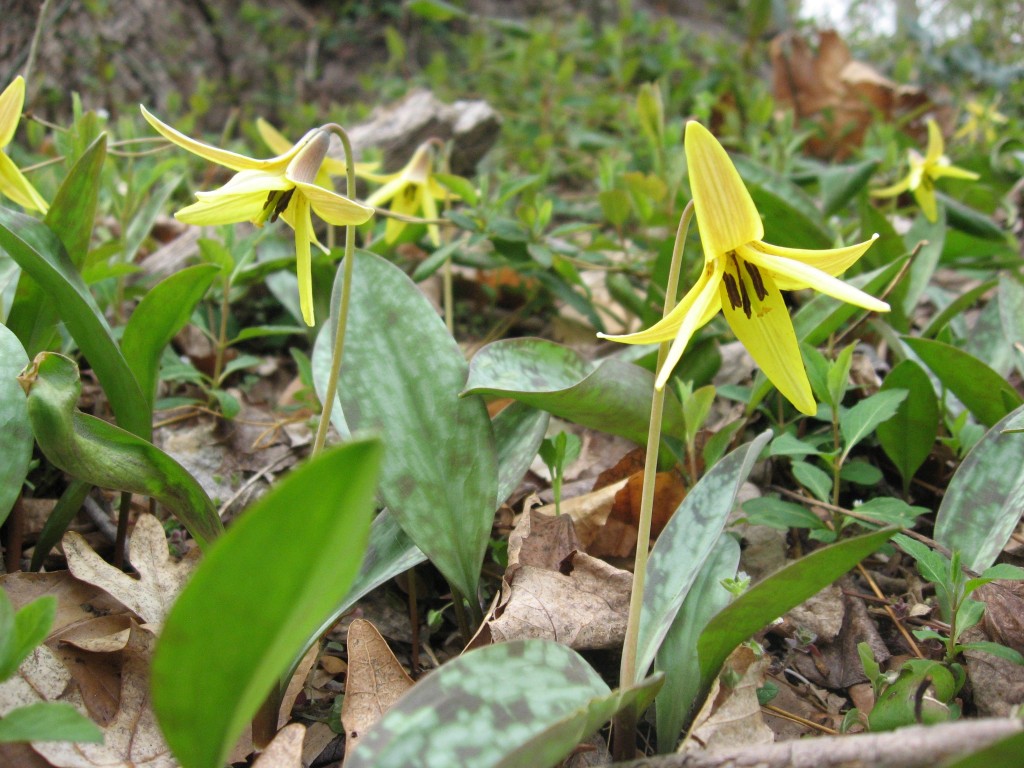
Blooming Trout-lilies in the Wissahickon Valley Park.  When you look carefully, you will see them.  These flowers stop us in our tracks. The ones that are actually flowering are old plants that are growing out of corms, a bulb-like root that will pull itself deeper and deeper into the ground as the years pass. When they get deep enough and develop the critical size of a root that comes with age, they will send out a bloom. For the most part, Trout lilies are single leaves with the most striking and exotic look, colors and textures. Whole colonies of this native spring ephemeral will form, covering the hillsides of ravines.  These plants are important to the geology of ravines, in that they are an integral part of soil retention. They form complex networks of corms, growing at  different depths in the soil, with the flowering specimens at the deepest depths. These plants keep the soil intact and limit the erosion that can occur in a ravine during heavy rains.  Other  native species such as Mayapple, Skunk cabbage, Lobelia and Jewelweed, just for starters, depend upon the rich, moist, and most importantly, Intact soils of the ravine.  In Morris Park, Trout lilies grow abundantly, and are an important part of soil retention in this at-risk urban drainage setting. Because of increased paving and development around both Morris Park and the Wissahickon Park, the run-off of water has become a  critical issue in the health of the creeks and the surrounding valleys. To find robust populations of the beautiful Trout Lilies is a reminder that there is a natural check growing in place of the increasingly inbalanced water- runoff in our urban parklands, which are primarily ravines along creeks.
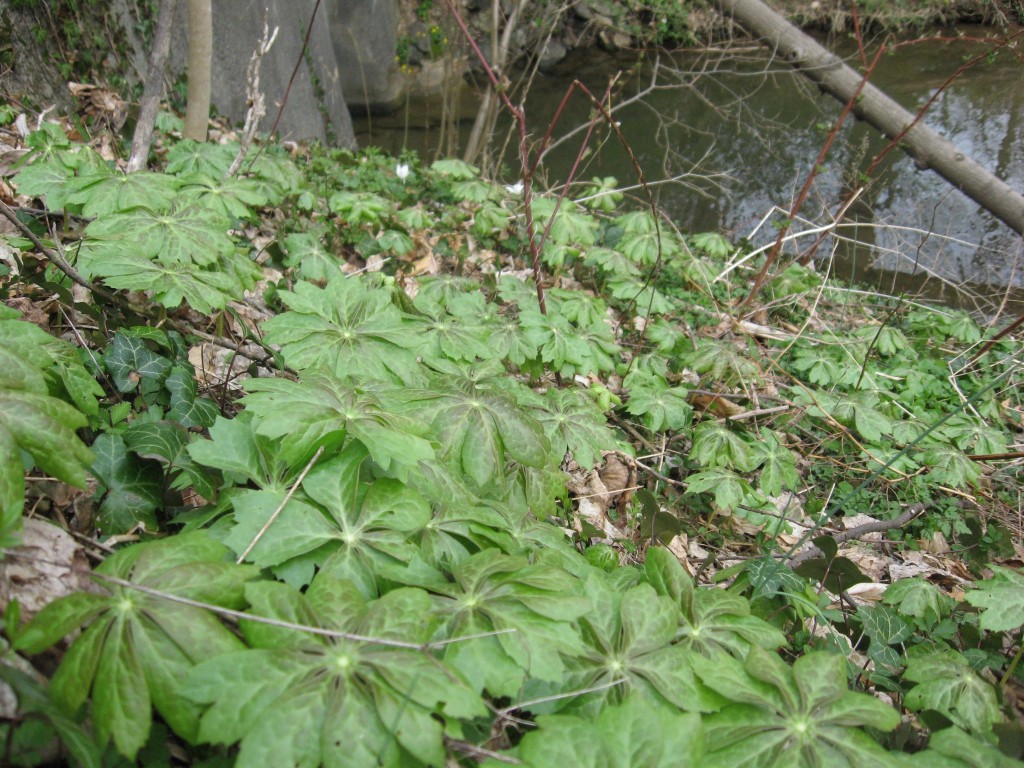
Mayapples grow abundantly along this tributary of the Wissahickon Creek, near Kitchen’s lane. The invasive English Ivy grows alongside the Mayapples. Â Only the sharpest eye will see that Bloodroot is flowering off in the distance.
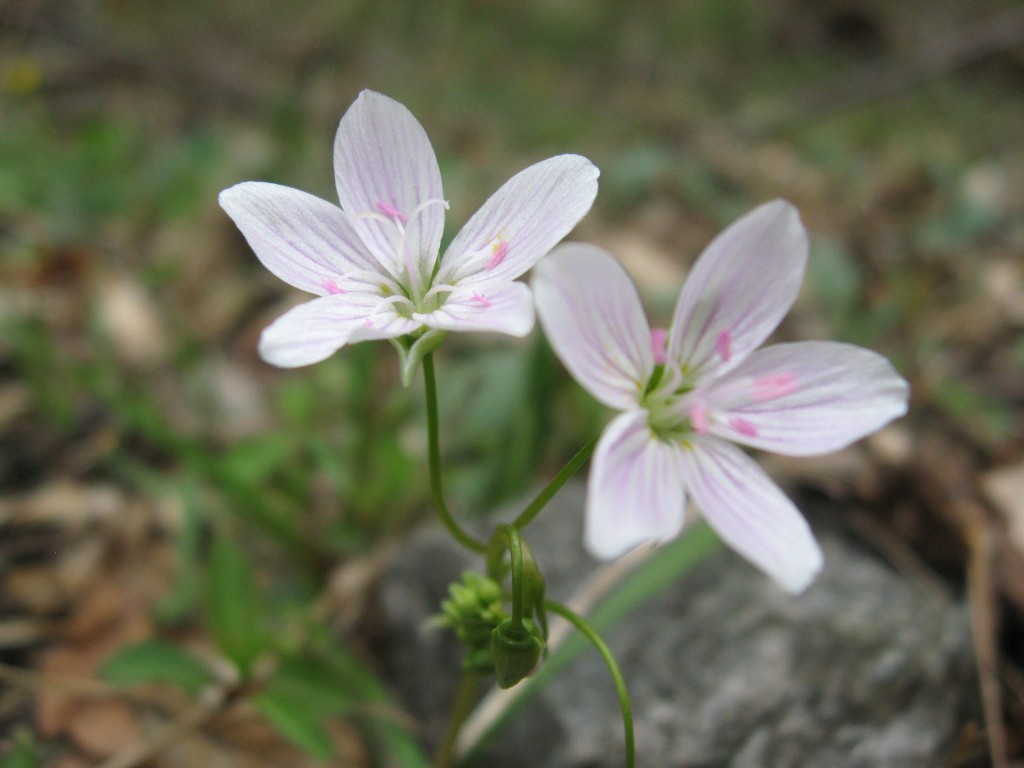
The Spring beauty has us constantly pausing in the springtime.
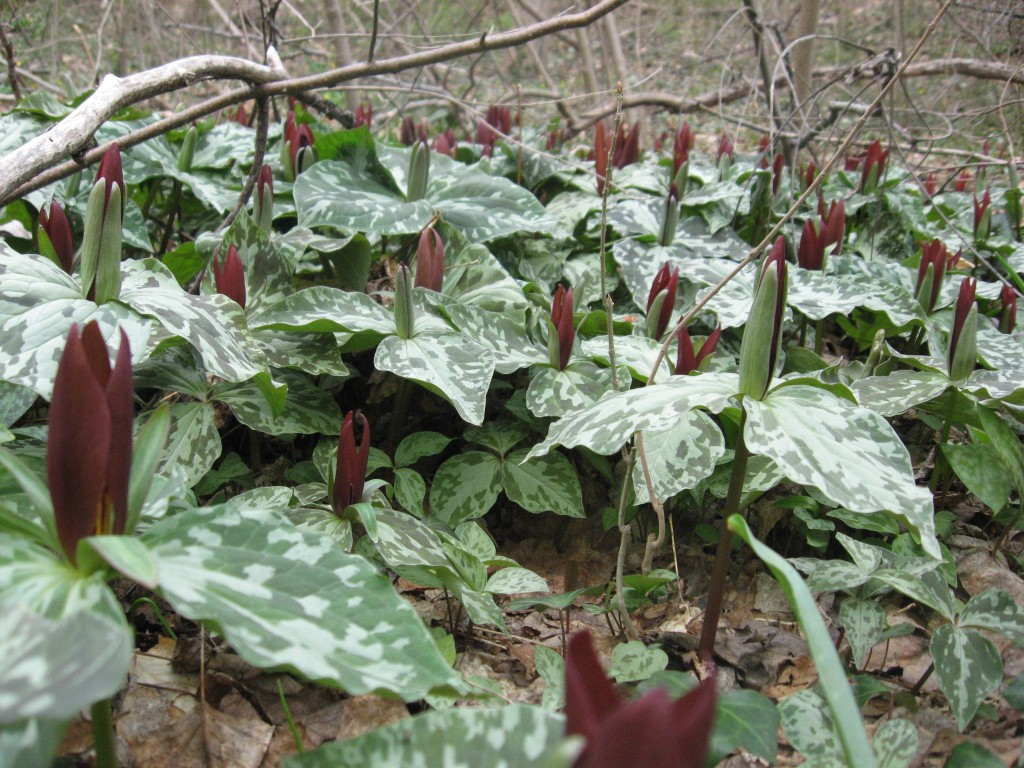
A stunning native wildflower. However, this one is growing out of its native range, and its proximity to a neighborhood indicates it is most likely a garden escape. As far as garden escapes go, this one is not troublesome, at least yet. Â We have a doozy to show you in just a minute, but first we must show you the Bloodroot.
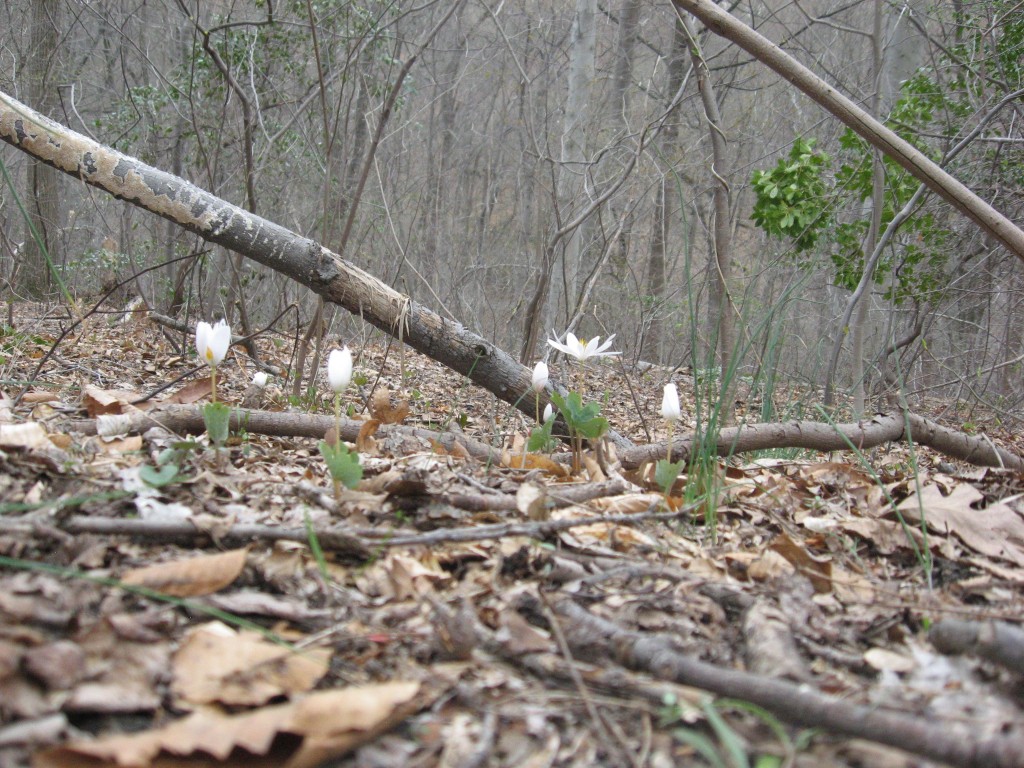
Note the beautiful Kalmia latifolia off in the distance.(Mountain Laurel)
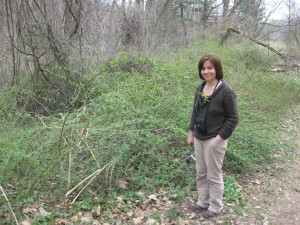
The old saw, Rosa multiflora. Isabelle is smiling for the camera. She is not overjoyed to see this mess of Multiflora rose. Â In fact, we selected trails that would have the least invasives, so we could enjoy our Sunday afternoon without thinking about depressing things.
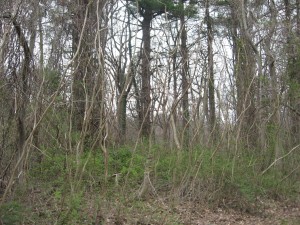
However we were confronted with reality, the invasive Aralia elata, the Japanese Angelica tree has penetrated the Wissahickon Valley Park in a disturbing manner. Â Morris Park is one place where it has not become completely invasive but is teetering on the brink of falling victim to this emerging threat to our forests. Â See our post The Japanese Angelica Tree Invades Morris Park for a more comprehensive discussion of this jaw-dropping, ongoing drama of invasive removal on the razor’s edge of success or failure in a highly at-risk natural area.
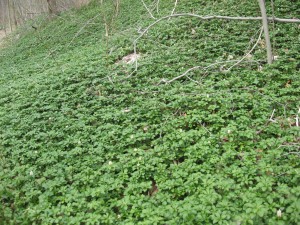
O.K., This is the garden escape doozy mentioned earlier. Â Pachysandra terminalis, Japanese Pachysandra. This one allows nothing else to grow in its midst except the most troublesome spring invasive we have found to date, the Lesser Celandine, Ranunculus ficaria. We are still not ready to go into this one. Â We will discuss this invasive when we are ready.
The Pachysandra pictured above is the classic garden escape found in the Fairmount Park system. Â When we see this one, we know that houses are not too far away. Â We had this one covering our yard, which was ripped out 4 years ago, but which we still struggle to eradicate in the public property bordering our yard, Morris Park. This invasive has been crowding out and eradicating the native Mayapple from Morris Park, among who knows whatever other native plants and associated insects birds and animals dependent on those specific native plants.
So with the full onset of spring we are full of joy at the sight of new green plants, and we are also confronted with the reality of the invasives. Â Spring is usually a roller coaster of experiences and emotions, and the beautiful native flowers and the disturbing invasives in our lives reflect this state of fluctuation and uncertainty.


